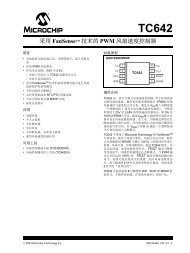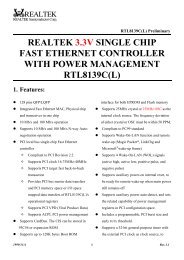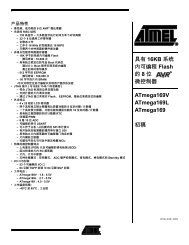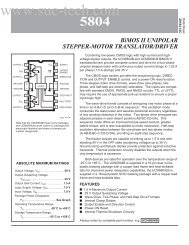Nios II Processor Reference Handbook
Nios II Processor Reference Handbook
Nios II Processor Reference Handbook
Create successful ePaper yourself
Turn your PDF publications into a flip-book with our unique Google optimized e-Paper software.
Functional DescriptionFigure 5–1. SDRAM Controller with Avalon Interface Block DiagramAltera FPGAPLLClock SkewAdjustmentSDRAM ControllerAvalon slaveinterfaceto on-chiplogicAvalonclockaddressdata, controlwaitrequestreaddatavalidAvalon Slave PortControlLogicInterface to SDRAM pinsckeaddrbacscasraswedqdqmclkPC 100SDRAMThe following sections describe the components of the SDRAM controllercore in detail. All options are specified at system generation time, andcannot be changed at run-time.Avalon InterfaceThe Avalon slave port is the only user-visible part of the SDRAMcontroller core. The slave port presents a flat, contiguous memory spaceas large as the SDRAM chip(s). When accessing the slave port, the detailsof the PC100 SDRAM protocol are entirely transparent. The Avaloninterface behaves as a simple memory interface. There are no memorymappedconfiguration registers.The Avalon slave port supports peripheral-controlled wait-states for readand write transfers. The slave port stalls the transfer until it can presentvalid data. The slave port also supports read transfers with variablelatency, enabling high-bandwidth, pipelined read transfers. When amaster peripheral reads sequential addresses from the slave port, the firstdata returns after an initial period of latency. Subsequent reads canproduce new data every clock cycle. However, data is not guaranteed toreturn every clock cycle, because the SDRAM controller must pauseperiodically to refresh the SDRAM.5–2 Altera Corporation<strong>Nios</strong> <strong>II</strong> <strong>Processor</strong> <strong>Reference</strong> <strong>Handbook</strong> September 2004









